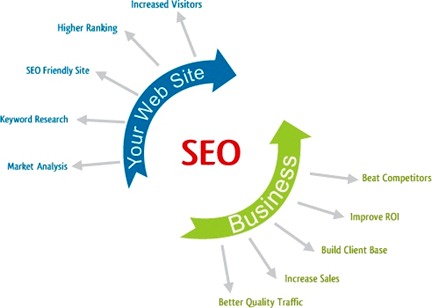![]() Track the sites that are tracking you. Collusion is a free extension for Firefox that records every time you’re tracked online, so you can see who is tracking you and try to work out why. The Mozilla Foundation says the extension is intended to help teach users about online tracking.
Track the sites that are tracking you. Collusion is a free extension for Firefox that records every time you’re tracked online, so you can see who is tracking you and try to work out why. The Mozilla Foundation says the extension is intended to help teach users about online tracking.
“Not all tracking is bad,” says Collusion’s site at Mozilla.org “but most tracking happens without users’ consent and without their knowledge. That’s not okay. It should be you who decides when, how and if you want to be tracked. Collusion will be a powerful tool to help you do that.”
You’re being watched. As you browse this site, you’re being tracked by Google Analytics, which many sites on the web use to monitor their users. If you’re signed into a social networking account, that’s likely tracking you too. And those ads you see? Most of them are tracking you in some way, following you as you jump from site to site to find out what you’re interested in.
Maybe you’ve noticed this before. You researched a product on Amazon, only to see ads for that specific product on half the sites you visit later. That’s called a retargeting ad, and it’s just one of the many uses sites around the web have for monitoring and analyzing your activity. Social networks like Facebook see this sort of tracking as part of their long-term strategy – the information they have about their users is a lot of what makes that company valuable. And MakeUseOf allows ad networks to track your activity so those networks can track which ads you do and don’t click – on this and other sites. We’re not an outlier: most sites do this.
You’re not paranoid – they really are watching you. With Collusion you can visualize who is tracking you on which sites.
Tracking The Trackers
Install Collusion and it will start tracking the trackers immediately. You should see a new icon, at the bottom of your browser:
![]()
If you don’t see the icon you’ll need to enable the add-on bar – right-click the empty space between the URL and address bar and you’ll get the option to do so. You can click the icon at any time to open the Collusion chart, which kind of looks like a spider web:

Icons at the center of the web are actual sites you’ve visited, but if you’re like most people the vast majority of services you see here aren’t ones you recognize. These are the various services those sites allow to track you. Click one of the sites you’ve visited and you’ll see a list of all the tracking services that site enables:

I’m not going to lie – we enable a lot of them.
Some of these tracking services are ad networks, which like to watch people move across various sites to figure out their interests. Some of these services are social networks, which follow you around the web, courtesy of share buttons and other integrated tools. And some are related to the site itself. Google Analytics, for example, is a tool we and many other sites use to find out which sort of articles people like the best – which in turn teaches us to write more content people like to read.
The vast majority of tracking sites, however, are advertising related. Collusion allows you not only to see which services a particular site allows to track you. However, you can also see which ad networks live on multiple sites you use regularly. Click any ad network to see:

The information isn’t necessarily 100% accurate, but it does give you insight into what happens every time you use the web.
Ready to give this a shot? Go ahead and download Collusion for Firefox.
Wait…What?
Not sure what’s going on here? Tina’s piece on what the web knows about you can help explain, as can Joshua’s piece on how you sold your soul to the Internet.
Whatever you think about online tracking – and many people argue it’s what makes the web work today – you have to admit that the vast majority of web users have no idea that they’re being tracked to this extent. Collusion helps, by visually showing you which sites are allowing services to track you. Many will shrug it off, but others will be surprised to learn just how many entities are following them around the web.
My colleague James argues it’s impossible for a content company to be profitable without such tracking. He’s gone so far as to call AdBlock, Ghostery and NoScript evil for making it harder for that tracking to happen. He runs more websites than me – I just write – so I’m not the expert here. Still, I can’t help but think there must be a way to make money online without this sort of tracking.
Concerned about being tracked? Well, we’ve shown you how to block social networks from tracking you. You can use private browsing when you don’t want to be tracked – it’s particularly useful while you’re shopping online, to avoid price hikes that result from tracking. You should also look into Do Not Track, though arguably it’s becoming less useful as ad networks back out.
Do you have some more tips? Leave them in the comments below.
The post Collusion Watches The Watchers – Find Out Who’s Tracking You Online [Firefox] appeared first on MakeUseOf.
 The best way to learn photography is to take as many photos as you can. The second best way to learn photography is to be a voyeur and look at good photos others have taken. In my fledgling attempts to learn the fine art of the lens, I am doing the former…but more than that when the shutter’s closed, I do the latter. You cannot train an eye to be creative perhaps, but looking at a few great shots and sharing some of your own could take you a few inches closer.
The best way to learn photography is to take as many photos as you can. The second best way to learn photography is to be a voyeur and look at good photos others have taken. In my fledgling attempts to learn the fine art of the lens, I am doing the former…but more than that when the shutter’s closed, I do the latter. You cannot train an eye to be creative perhaps, but looking at a few great shots and sharing some of your own could take you a few inches closer.








 Don’t you hate those ugly tangles of spare cables? Eventually, we all end up with drawers or boxes full of cable spaghetti. And good luck if you actually need to find something.
Don’t you hate those ugly tangles of spare cables? Eventually, we all end up with drawers or boxes full of cable spaghetti. And good luck if you actually need to find something.











 Spotify has changed the way many of us consume music, myself included. I used to buy albums on a regular basis, but once the time came when I’d rip the CD to my computer’s hard drive and then have no further use for it, I knew the times they were a-changin’. Once Spotify arrived on the scene then I stopped buying albums altogether, and I haven’t looked back since.
Spotify has changed the way many of us consume music, myself included. I used to buy albums on a regular basis, but once the time came when I’d rip the CD to my computer’s hard drive and then have no further use for it, I knew the times they were a-changin’. Once Spotify arrived on the scene then I stopped buying albums altogether, and I haven’t looked back since. 






 After teasing its new look during the recent
After teasing its new look during the recent 
